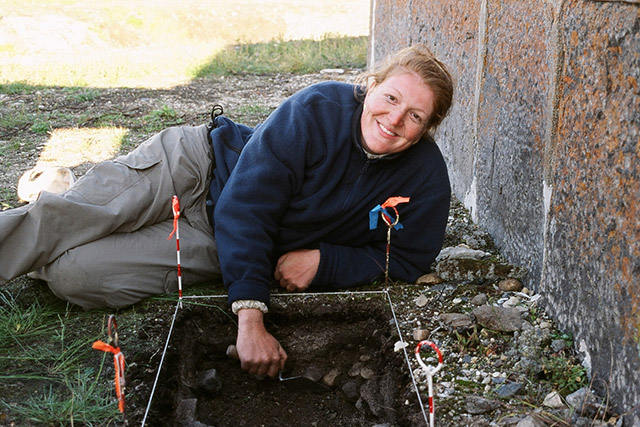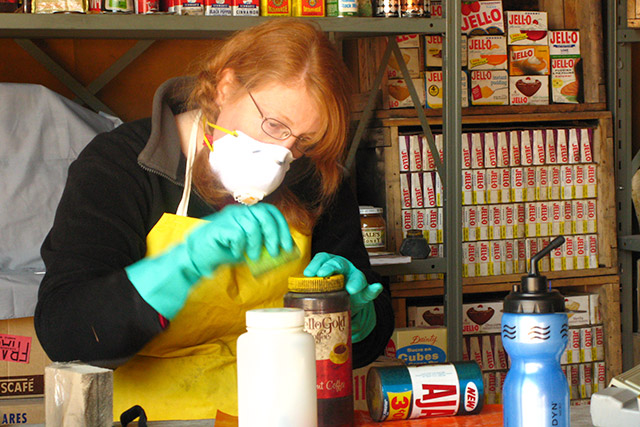She can dig it: Cultural Resource Management Advisor Sandra Hollender
Wapusk National Park
Celebrating International Day of Women and Girls in Science with Sandra Hollender, Cultural Resource Management Advisor, Parks Canada, Manitoba Field Unit
Parks Canada: What is your scientific background and why did you choose to become a scientist?
Sandra Hollender: During my career path I studied Archaeology and Object/Artifact Conservation. While archaeology is a considered a social science, to be able to assess and apply treatments to archaeological and historical artifacts, I needed a specialized program in conservation and a strong chemistry background.
My cultural background is Italian. As Italy is a very archaeologically rich country, most Italians have an affinity to history and archaeology. Despite growing up here in Canada I dreamt that I would one day live and work in Italy as an archaeologist. Archaeology was interesting, and I still do digs occasionally, yet the lab is where I found my passion.

PC: How do you use STEM in your job at Parks Canada?
SH: I have been with Parks Canada for just over 23 years now. I started my career as an object conservator where I used my knowledge of chemistry and material science every day in the stabilization and preservation of objects for storage, display, monitoring and correcting environmental conditions of our buildings and displays.
My role may have changed, now I am the Cultural Resource Management Advisor for the Manitoba Field Unit, but I still use my knowledge of materials and environmental conditions to help guide projects geared towards the preservation of the historic buildings on the sites we administer and objects within them.
PC: What do you love most about your job?
SH: The best part of my job is contributing to asset project work and knowing that my voice is heard when it comes to preserving the heritage value of these places. Every project is different, and not without its hiccups, but in the end we have acted in the best interest of the buildings and objects and they will last to be there for everyone to enjoy.
In conservation, there is never one treatment option. You must look at the composition of the piece, how it was made, what processes happened to it over time and where is it going to go. They say that right after it was made every object is deteriorating, it is never static.
PC: What are the current opportunities and challenges for women in science?
SH: Today, I think the opportunities are endless. I have a tween daughter and I see some of the antiquated mind sets are still around. My heart sinks when I hear her say, “I don’t like math” or “that’s a man’s job” despite what we think we are telling her. Most fields have come a long way and getting better every day. I know many research scientists, engineers and other women in fields that used to be thought of as for men.

PC: Do you have any advice for women beginning their careers in the STEM fields? Possibly something you wished you had known when you first started?
SH: The best piece of advice I can give is to never give up. You may want to do a career that involves science or math and think “I suck at that” or “I can’t do that” but today there are so many resources that can really help: tutors, the internet, even YouTube!
My parents encouraged me to get a well-rounded background in high school in courses I thought I’d never need. I was failing chemistry until I found a wizard of a tutor at one of these mall-front tutor services. I never told anyone I was getting help. Now I can say I am so glad I did it because it turned out I needed the chemistry after all!
Never be embarrassed to look for help. A tutor or even a YouTuber can put things in a different light than maybe even your friends or teacher do and one day it will just click. You’ll wonder what all the fuss was about. Sometimes it just takes a different path to get to the same place.
Related links
- Environmental DNA helping Parks Canada establish...
- Love, Loss, and Raptors
- Pick of the Season: Blueberry Jam
- Pick of the Season: Cranberries
- Churchill is the Greatest: 3 more reasons Time Magazine was...
- Cape Churchill Caribou Scat Collection
- Pick of the Season: Fireweed jelly
- Pick of the Season: Labrador Tea
- Pick of the Season: Snow goose
- Join the Pod: 5 facts about beluga whales in Manitoba
- Date modified :